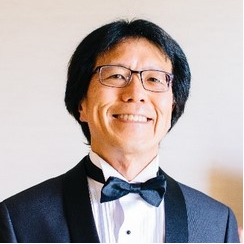Cartilage and Bone Tissue Engineering for Craniofacial Reconstruction
A special issue of Bioengineering (ISSN 2306-5354). This special issue belongs to the section "Regenerative Engineering".
Deadline for manuscript submissions: 25 May 2024 | Viewed by 1695
Special Issue Editors
Interests: rhinoplasty; nasal reconstruction; human septal cartilage; cartilage tissue engineering
Special Issue Information
Dear Colleagues,
The progress made in bone and cartilage tissue engineering over the last two decades has the potential to address some of the reconstructive challenges within the craniofacial and maxillofacial areas. The current barriers to conventional surgical reconstruction in these areas relate to inadequate autologous tissue supply, donor site morbidity, and extrusion or immune rejection with allogenic or alloplastic implant options. Tissue engineering of autologous tissue can bypass these limitations and theoretically offer grafts in shapes and sizes required for the reconstructive goals. In addition, new technologies in bioprinting can advance the fabrication of new tissue. This Special Issue on “Cartilage and Bone Tissue Engineering for Craniofacial Reconstruction” summarizes current methodologies, highlights recent advances, and presents innovative adjunctive technologies that are likely to impact this field. The articles for this Special Issue will encompass tissue engineering for nasal and ear cartilage reconstruction, bone tissue engineering for craniofacial and maxillofacial areas, and temporomandibular joint regeneration. Experts renowned in the field of tissue engineering are invited to provide their perspective in this Special Issue through submissions focusing on primary work performed in their laboratories or a review of current practices.
Prof. Dr. Deborah Watson
Prof. Dr. Robert L. Sah
Guest Editors
Manuscript Submission Information
Manuscripts should be submitted online at www.mdpi.com by registering and logging in to this website. Once you are registered, click here to go to the submission form. Manuscripts can be submitted until the deadline. All submissions that pass pre-check are peer-reviewed. Accepted papers will be published continuously in the journal (as soon as accepted) and will be listed together on the special issue website. Research articles, review articles as well as short communications are invited. For planned papers, a title and short abstract (about 100 words) can be sent to the Editorial Office for announcement on this website.
Submitted manuscripts should not have been published previously, nor be under consideration for publication elsewhere (except conference proceedings papers). All manuscripts are thoroughly refereed through a single-blind peer-review process. A guide for authors and other relevant information for submission of manuscripts is available on the Instructions for Authors page. Bioengineering is an international peer-reviewed open access monthly journal published by MDPI.
Please visit the Instructions for Authors page before submitting a manuscript. The Article Processing Charge (APC) for publication in this open access journal is 2700 CHF (Swiss Francs). Submitted papers should be well formatted and use good English. Authors may use MDPI's English editing service prior to publication or during author revisions.
Keywords
- craniofacial
- cartilage tissue engineering
- bone tissue engineering
- tissue culture
- cartilage scaffolds
- tissue regeneration







